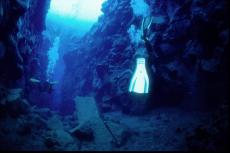Elephant seals nap during deep dives
Scientists uncover the unique sleep habits of elephant seals during their deep-sea dives.
Elephant seals were recently the focus of a groundbreaking study that explored their sleep patterns during dives. The research, partly funded by the U.S. National Science Foundation and published in the journal Science, provides a unique insight into the world of these marine mammals.”
During the breeding season, elephant seals sleep for up to 10 hours a day on land. However, when they go on their month-long foraging trips at sea, their sleep patterns change significantly. Research has shown that during these trips, the seals only sleep for about 2 hours a day, taking short 10-minute naps during their 30-minute deep dives. Interestingly, they often spiral downward in a sleep-induced drift and sometimes rest motionless on the seafloor.
Deep sleep stage
Dr Jessica Kendall-Bar, the lead author from UC San Diego's Scripps Institution of Oceanography, has developed an innovative system to record brain activity in wild seals during their typical diving behaviour. The team used a neoprene headcap to secure the EEG sensors and a data logger. They were then able to retrieve the data when the seals returned to the beach.
This system revealed that the seals enter a deep sleep stage known as slow-wave sleep while maintaining a controlled glide downward. They then transition into REM sleep, resulting in a "sleep spiral" due to sleep paralysis.
The study's findings suggest that the seals' unique sleep pattern might be an adaptive response to their environment. Being vulnerable to predators like sharks and killer whales when at the surface, the short surface intervals between dives minimise exposure to threats. Dr. Kendall-Bar explains, "They're able to hold their breath for a long time, so they can go into a deep slumber on these dives deep below the surface where it's safe."



























